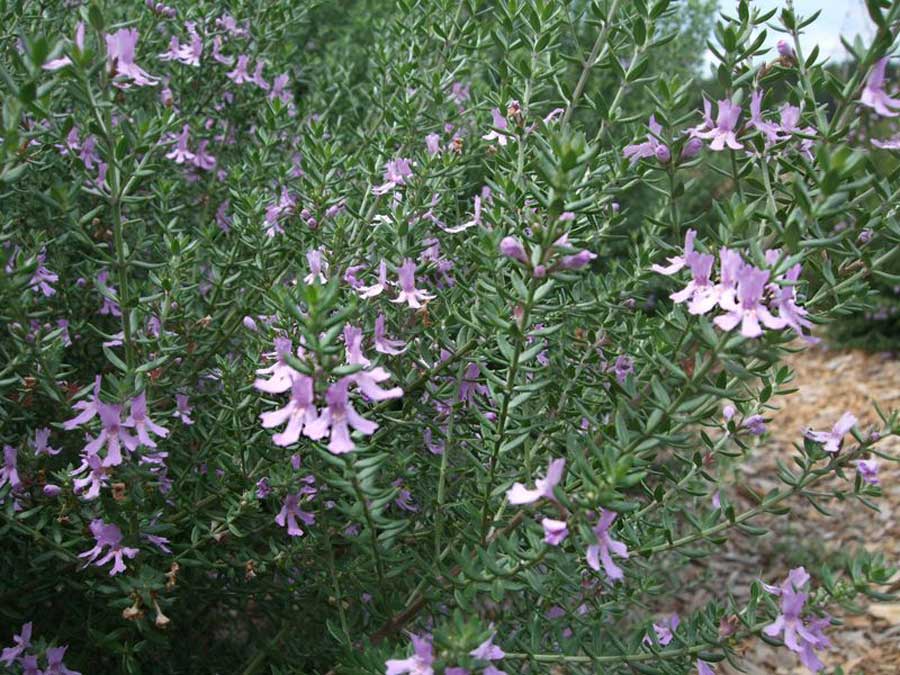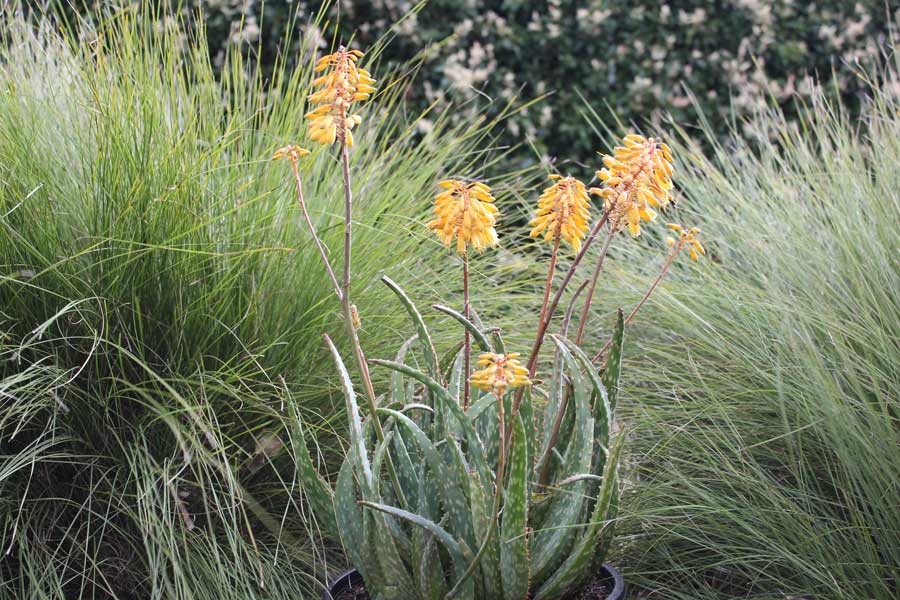Ever puzzled over why certain plants flourish in your garden, while others seem to falter? The answer may reside just beneath your feet – in the sandy soil.
This soil type, renowned for its excellent drainage and easy workability, can either be a gardener’s delight or a tough nut to crack.
In this article, we’ll delve into the details of sandy soil gardening, highlighting the top 10 plants that prosper in this type of soil, and sharing advice on how to make the most of your sandy soil garden.
In another article, I talked about the top native plants for sandy soil, but in this article we’ll include exotics and natives.
What sort of plants can you put into sandy soil? Keep reading!

Understanding Sandy Soils
What is a Sandy Soil Garden?
Sandy soil typically presents itself with a coarse texture and a loose structure when moist. It comprises of an abundance of large sand particles, which make it light and airy. With the addition of significant amounts of clay, silt and organic material it can be come sandy loam, which is one of the gardener’s dream soil types.
Meanwhile, clay soils are much heavier, harder to work with, and water retentive with a small particle size.
Pros and Cons of Sandy Soil
The superb drainage of sandy soil is a significant boon for plants that can deal with its characteristics.
Its less compact nature allows for impressive drainage which is great for plants that hate wet feet, but also leads to poor water retention. It’s often low in nutrients like nitrogen, phosphorus, and potassium, which are vital for plant growth.
Sandy soil can become hydrophobic, meaning that the large particles become coated in plant waxes. In ideal conditions, soil organisms would break these natural waxes down, but when the soil dries out it’s no longer able to support these critters. This becomes a downward spiral for the soil’s ability to accept water.
Choosing the Right Plants for Sandy Soil
Factors to Consider
When selecting plants for sandy soil, it’s important to consider their drought tolerance and their nutrient requirements. Some plants can thrive in the loose, often dry conditions of sandy soil, while others may struggle.
Top 10 Plants for Sandy Soil
Before we get into the “top” plants for sandy soils, a quick disclaimer:
The best plants for your sandy garden will depend on the availability of sunlight, temperatures, irrigation, weather, and your personal taste.
And talking about groups in the genus or species level is helpful, but specific cultivated varieties can perform differently based on their breeding. For example, some callistemons can’t deal with drought while the ones that we’ve bred at Ozbreed can handle both drought and wet feet.
Westringia spp.
Westringia, commonly known as coastal rosemary, is a hardy plant that thrives in sandy soil. It’s an ideal plant for coastal areas because it’s also able to tolerate salt spray from the ocean. Known for its attractive silvery foliage and small white or light lavender flowers, this plant is drought-tolerant and can handle both full sun and partial shade.
Blue Gem™ Westringia hybrid ‘WES03’ PBR is one of the most prolific and vivid flowering westringias to have ever been bred.

Yucca elephantipes
Yucca elephantipes is a sturdy plant that flourishes in sandy soil. It’s characterized by long, sword-like leaves and a tall, branched stem. Spineless Yucca is drought-resistant and can thrive under full sunlight, but watch out for the spiky tips on each leaf – especially along footpaths where they’re notorious for poking people in the eye.
Anigozanthos spp. (Kangaroo Paw)
Anigozanthos, or kangaroo paw, is an Australian native plant that is well-suited for sandy soil. Its unique, paw-like flowers add an exotic touch to any garden. Kangaroo Paw is drought-tolerant and prefers a sunny location.
Gazania spp.
Gazanias are vibrant, daisy-like flowers that love sandy soil. They’re sun-loving, drought-tolerant, and come in a variety of radiant colours. These low-maintenance plants look amazing, but beware that some varieties can be incredibly weedy with virile seeds.
Lavandula (Lavender)
The lavender plant is a fragrant herb that thrives in sandy soil, even in poor soils. It prefers full sun and well-drained conditions. Besides being drought-tolerant, lavender plants add a beautiful purple hue and a delightful scent to your garden.
Agapanthus (lily of the Nile)
Agapanthus, also known as lily of the Nile, is a perennial plant that does well in sandy soil. It’s recognized for its striking blue or white flowers. Agapanthus is drought-tolerant and prefers full sun to partial shade.
Correa Spp.
Correa is an Australian native plant adapted to well drained soil. This hardy shrub produces attractive, bell-shaped flowers and is known for its drought-resistance and tolerance to sea salt spray. Correa can handle both full sun and partial shade.
Metrosideros (New Zealand Christmas tree)
Metrosideros, commonly known as the New Zealand Christmas tree, is a vibrant, tough plant that loves sandy soil types. It’s renowned for its bright red flowers, which typically bloom during the Christmas season in the Southern hemisphere. Metrosideros is drought-tolerant and prefers full sun.
Cacti
Plants in the cactus family are often highly adapted to thrive in sandy soil. These plants are often extremely drought-tolerant and prefer full sun. With their unique shapes and sizes, cacti can add an interesting visual element to your sandy soil garden. Note that some cacti actually do better in clay, such as dragon fruit, but these are the exceptions within the family.
Aloe spp.
Aloe vera (and related species in the same genus) are a popular type of plant that thrives in sandy soil due to their need for well-drained conditions. Known for their health benefits and succulent leaves, aloes are drought-tolerant and prefers full sun to partial shade.
Mighty Gold™ Aloe hybrid ‘AL02’ PBR.

Tips for Gardening in Sandy Soil
Improving Soil Structure
Enhancing the structure of your sandy soil can greatly improve your gardening results. One effective method is adding organic material, such as compost or well-rotted manure, which can increase water retention and boost the soil’s nutrient content.
However, this won’t help the hydrophobic problem if you allow the soil to become dry. Adding a quality hydrogel like Terracottem or a kaolin clay like Soil Solver is a better way to ensure the soil stays moist in the long-term.
Proper Watering Techniques
Correct watering is key in sandy soil gardening. Due to its poor water retention, under-watering can quickly lead to dry conditions. It’s harder to over-water plants in sand due to its quick draining properties, so try to keep the soil moist with frequent or semi-frequent watering.
Or, choose extremely drought-tolerant plants that can get by with little rain.
Conclusion
Gardening in sandy soil may pose unique challenges, but with the right plants and care, it can turn into a rewarding experience. We encourage you to experiment with the plants listed in this article and utilise the tips shared. Happy gardening!
